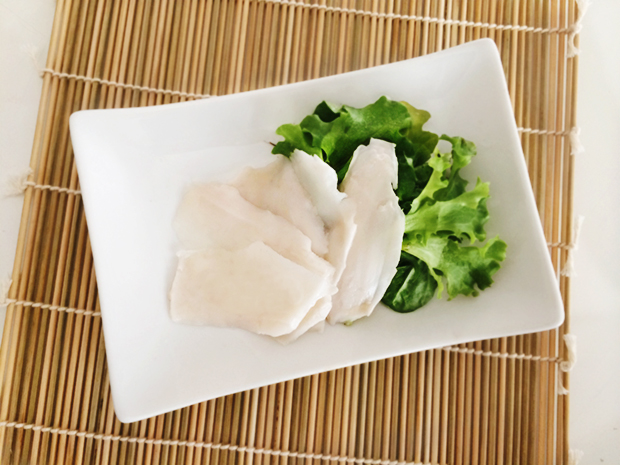I never realized how similar coconut flesh and raw fish were texturally until I tried coconut sashimi for the first time. A friend first introduced me to this when we lived in Grenada (and she first learned about it from watching Korean dramas!), where coconuts are available and abundant year-round. We’d bring empty bottles to the market downtown with us and get them filled up with fresh coconut water. After the coconuts were emptied, we’d ask the coconut man to chop up the coconuts for us and take them home to scoop out the sweet, succulent flesh (or we’d eat them right there with makeshift spoons chopped off from the sides of the coconuts).

The texture of the meat can vary depending on the age of the coconut. Younger coconuts will often have more juice and less meat. The meat it does have is more of a “jelly” that just barely clings to the shell. Slightly older coconuts will have a bit less juice, but firmer, thicker meat. These meatier coconuts are perfect for making coconut sashimi.
In the US, you can usually find fresh coconuts at any Asian market. They don’t normally have the outer skin anymore and usually resemble little cones that have been put through a giant pencil sharpener. It’s a little harder to tell how old exactly the coconuts are, but they will do just fine for making sashimi. I eat coconut sashimi exactly as I would eat regular sashimi — with a good quality soy sauce and wasabi. This might be a great vegan substitute for sashimi for any of your health-conscious friends or for satisfying a sushi craving for those who might be pregnant. I haven’t tried it other ways yet, but I’m excited to see how it might taste as nigiri or ceviche (maybe with some avocado!).











Connect with us